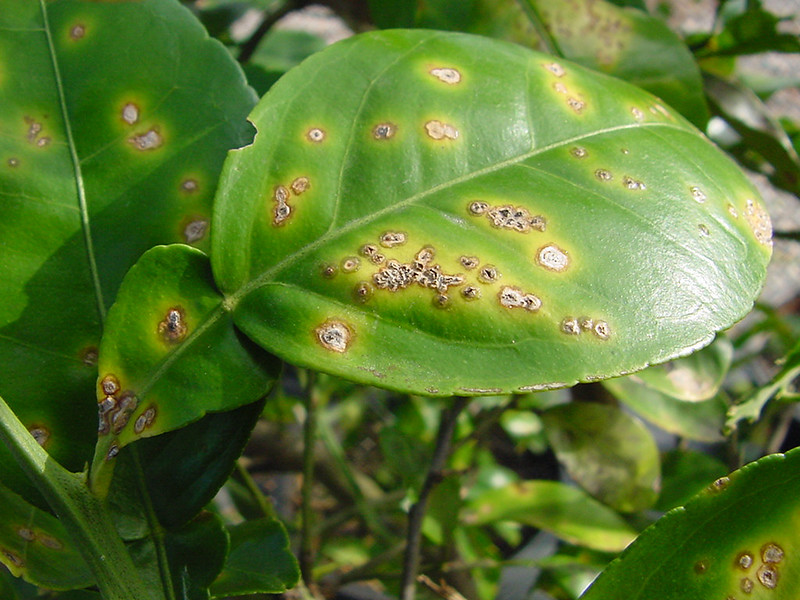Monitoring and Mitigating the Spread of Plant Disease
ARS is committed to controlling plant diseases to protect our food security and ensure an adequate supply of non-food crops for feed, fiber, energy, and horticultural uses. Plant diseases have significant impacts on yields and quality, resulting in billions of dollars in economic losses and management inputs each year to crops, landscapes, and forests in the United States. Crop losses due to plant pathogens that did not originate in the United States are estimated to cost $21 billion per year. The National Plant Disease Recovery System (NPDRS) provides the flexibility for rapid response to new and emerging diseases and immediate threats identified in other countries, often before they reach the United States. Effective control of plant diseases requires an understanding of the biology of disease-causing agents. The following accomplishments in 2021 highlight ARS successes in identifying and halting the spread of plant diseases.
Establishment of rice plants as an important tool for functional genomic studies to understand and manage plant disease resistance in bread wheat. The genetic complexity of the common bread wheat, which contains three different genomes, has been extremely challenging to researchers to conclusively pinpoint the role of numerous insect/pest-responsive genes that are potentially involved in disease resistance. ARS researchers in West Lafayette, Indiana, demonstrated that this problem can be overcome by analyzing less complex model genomes, such as rice. Since rice resembles bread wheat in its responses to Hessian fly infestation at the physical and molecular level, the scientists found that rice plants are suitable for functional gene studies that can help elucidate how wheat defends against Hessian fly and other destructive insect pests. This strategy can be employed by other plant researchers to characterize genes, study other plant-pest/pathogen interactions, and develop effective mitigation strategies that complement native resistance.
New viruses transmitted by whiteflies threaten cucurbit crops in California’s Central Valley. In the U.S. Southwestern low desert, two yellowing viruses are known to impact summer and fall cucurbit production. These two viruses had not been previously known to infect plants in the Central Valley of California, where more than half of U.S. cantaloupe production occurs. During the fall of 2020, ARS scientists in Salinas, California, identified both viruses from melon plants in Fresno County, California, using a virus detection system developed by the ARS laboratory. The viruses have the potential to cause severe losses, and it is important for the cucurbit industry that continued monitoring occur to determine prevalence and to develop strategies to reduce the impact of the virus.
Screening for sunflower resistance to Sclerotinia basal stalk rot. Field trials to evaluate sunflower resistance to Sclerotinia basal stalk rot are time consuming and offer limited resolution for identifying resistance. ARS scientists in Fargo, North Dakota, and colleagues at North Dakota State University and Iowa State University developed and validated a new greenhouse method using sclerotinia-infected millet seed to infect single sunflower plants to evaluate basal stalk rot resistance. The new method is time- and space-efficient and allows for disease evaluations in a single year, compared to multi-year, multi-location studies using inoculated field trials. Results from the new method were strongly correlated with field observations. This new method will assist sunflower breeders and pathologists in their evaluation of sunflower genetic populations to improve the rapid identification of genomic regions associated with resistance to basal stalk rot.
Training dogs to detect early infection of plants by pathogens. Early detection and rapid response are key to the mitigation of all plant diseases. Representative samples for testing can be difficult to collect, especially early in the growing season or epidemic when pathogens are at their fewest. This same caveat applies at the individual plant scale when a pathogen is incompletely distributed in its plant host, particularly with large and/or perennial host plants. Both these sampling scenarios can lead to false negative test results. ARS researchers in Fort Pierce, Florida, and industry cooperators demonstrated that canine detection of plant pathogens is a novel approach that is rapid, sensitive, and reliable for bacterial and viral plant pathogen detection. Since canines holistically and non-destructively assay the entire plant, sampling error can be avoided at both agroecosystem and individual plant scales while maintaining testing accuracy. Real-time canine detection generates rapid results that can be translated into immediate corrective actions by growers.
 Citrus Canker causes lesions on the leaves, stems, and fruit of plants including citrus and other plants in the citrus family. January 28, 2004. USDA Photo. https://flic.kr/p/2kfo5Pt
Citrus Canker causes lesions on the leaves, stems, and fruit of plants including citrus and other plants in the citrus family. January 28, 2004. USDA Photo. https://flic.kr/p/2kfo5Pt

